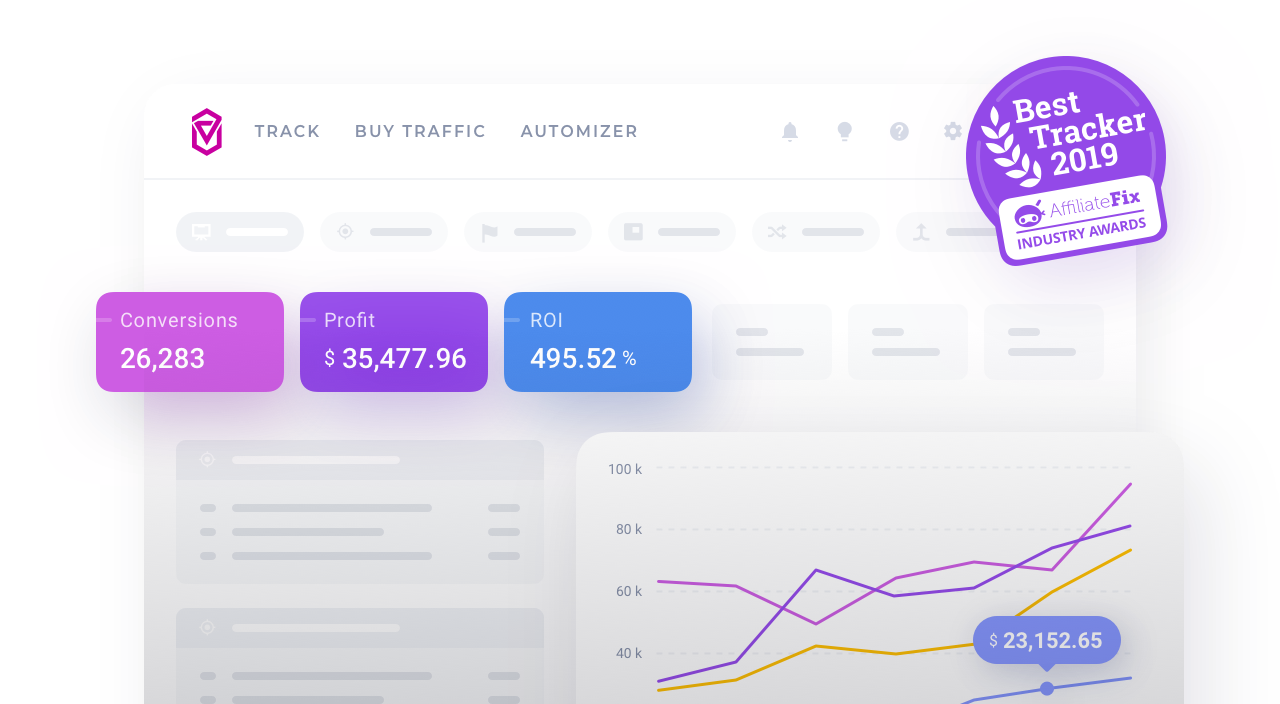Creating a Campaign – Part 2: Destination

Once you have defined what kind of campaign you want to advertise and in which traffic source, you need to characterize where your traffic will be directed to. You can do this in this DESTINATION tab. You have two options on how to define a campaign destination:
- Option One: Flow
- Option Two: Path

Option One: Flow
Flow is a separate element in Voluum that will save you time if you often use the same path in your campaign. In short, a flow is a saved path template. While using a flow you have to keep in mind that providing changes to a flow setup will affect all campaigns where this flow is used.
To use a flow, select the Flow radio button and:
- If you have already created the flow, then simply select this flows from the Create new flow drop-down menu.
- If you want to create the new flow, click the Select flow drop-down menu and click the Create new flow option. To learn how to create a flow, read the Creating a Flow article.
Option Two: Path
You can set up a path or paths that will be used in this campaign only. In general, a path defines how visitors are directed to their destination, where and how many of them.
-
Decide, what your default transition in a path should be. You can choose between:
- Redirect modes: 302 (standard redirect), meta-refresh, double meta refresh. Read the Redirect modes section to learn more
- Direct method of tracking
When you select one of the options above, all your paths will use this transition type by default. You can still select a different transition type for each path separately.
- (Optional) Use the Redirect Webhook feature.
- (Optional) Use Traffic distribution AI for paths feature. Read the Traffic Distribution AI: Overview article.
-
Select a path type. There are two types of paths available: default and rule-based path:
- (Optional) Rule-based paths: Path or set of paths where traffic is redirected within defined constraints set in the rule. Adding the rule-based paths is optional and should be driven by your business requirements. Read the Adding a Rule-Based Path article to learn more.
- Default paths: Path or set of paths that do not have any traffic-targeting options, thus traffic that does not match the criteria set in the Rule-based paths section, will be passed along the default path. A single default path is always required. Read the Adding a Default Path article to learn more.
You need to have at least one default path set.
- Provide a name for the path.
-
Set path destination. You have two options:
- Landers & offers
- Offers only
- Decide, what your path's transition should be. You can choose between several redirect modes that are variants of a redirect method of tracking or direct method of tracking. Read the Redirect Modes article to learn more.
- (Optional) Use the Traffic Distribution AI for landers & Offers feature.
- Select a lander or landers. If you select more than one, you can set different weights for each lander individually to distribute traffic manually.
- Select an offer or offers. If you select more than one, you can set different weights for each lander individually to distribute traffic manually.
-
Click the Save button.

The traffic distribution is governed by a weight value. The proportion of weight values is reflected in the percentage of traffic distribution. This percentage always sums up to 100%. You can set a weight value for the following elements:
- Path
- Lander
- Offer
The traffic distribution applies to these elements in that order.
When you create several elements, they are automatically assigned a default weight of 100. Adding two elements, for example Optimized Lander 1 and Optimized Lander 2 with a default weight value of 100 for each element will result in 50% traffic distribution for each lander. This is to ensure even traffic distribution.

If you change weight values manually, the percentage of traffic distribution will also change respectively to reflect the proportion of weight values. Changing a weight value for Optimized Lander 2 to 300 will result in 75% of visits sent to the Optimized Lander 2.

You usually do this once the performance of a path has been accurately measured following the campaign's testing period.
Voluum Note: You can edit your path’s weight at any time to redistribute traffic at an optimal ratio.
For example, if one lander is doing better (higher CTR %) than another within the same campaign, you can increase the path weight of the best performing lander to distribute traffic at a higher ratio to the better performing landing page.
Frequently Asked Questions
Have more questions about creating the campaign? You might find the answer below:
I'm sure that I have added the flow to Voluum, but I cannot see it among other flows during selection. Could you explain why?
If you cannot see the added flow during selection, it's highly likely that you have selected the Country tag label that does not match the Country tag label in the flow. For example, if you have assigned the Australia label to the flow in Voluum, you won't see this flow if you have selected other option than Australia or Global from the drop-down menu in the campaign form.
Besides the standard Campaign URL, I've got the Impression pixel URL after having saved the campaign entity. How can I use it?
The Impression pixel URL is used to track impressions in Voluum. Actually, both URLs, the Impression pixel URL and Campaign URL, are placed in order to record impressions, pass variable data from the source, and ensure that traffic is redirected correctly to the campaign. To read more, go to the Tracking Impressions in Voluum article.


